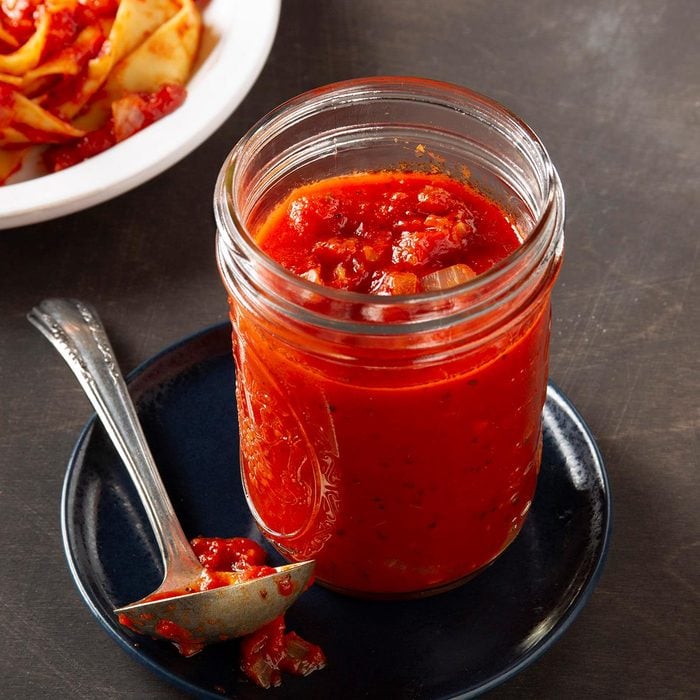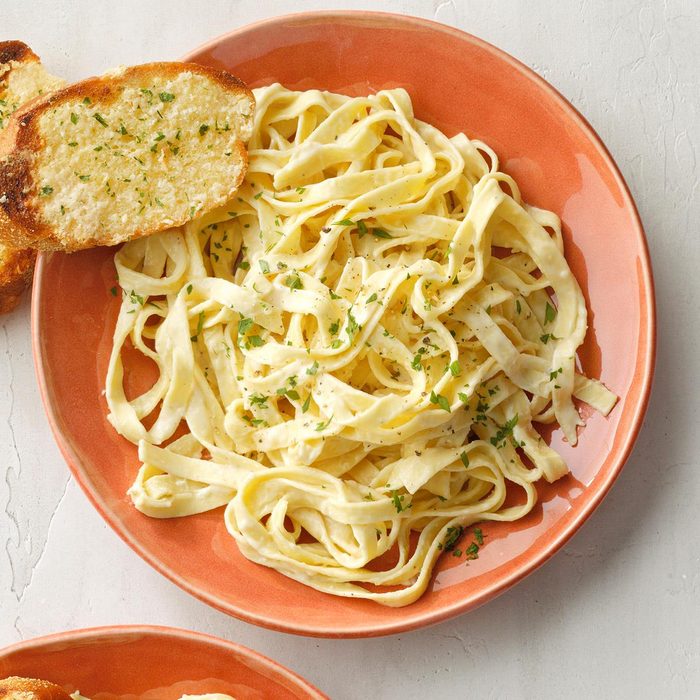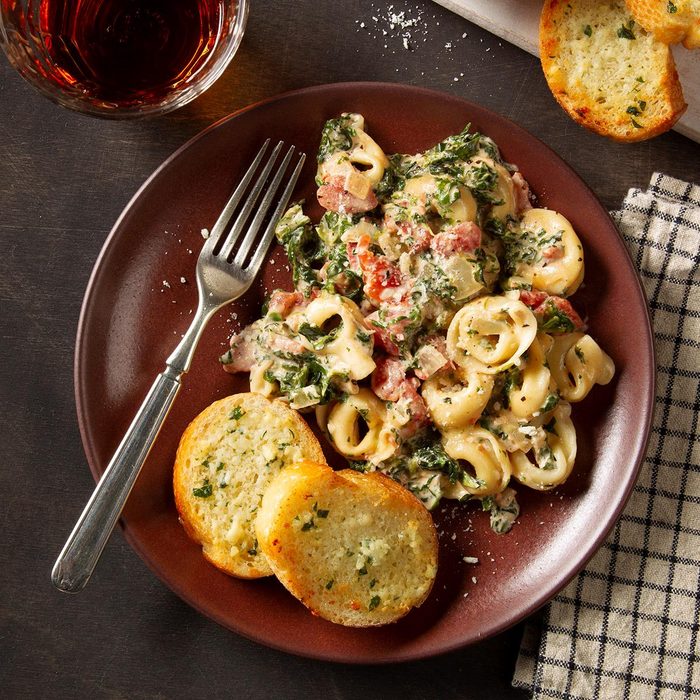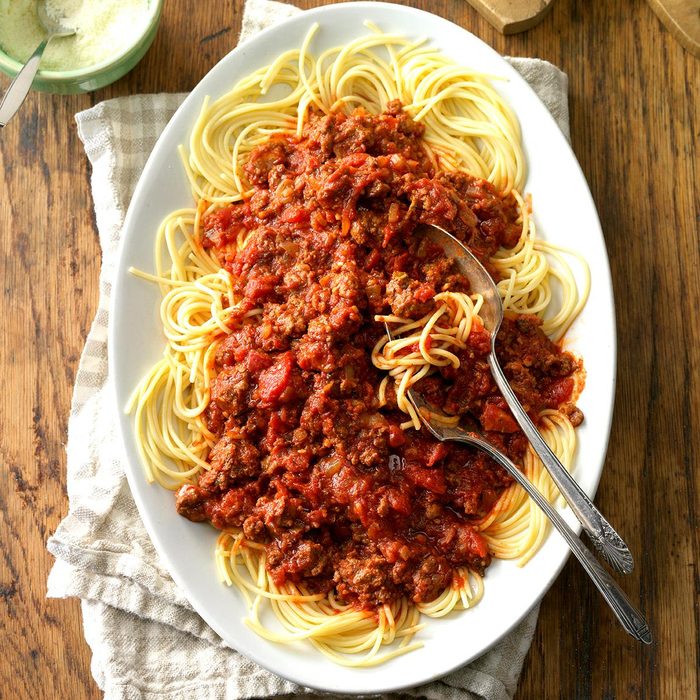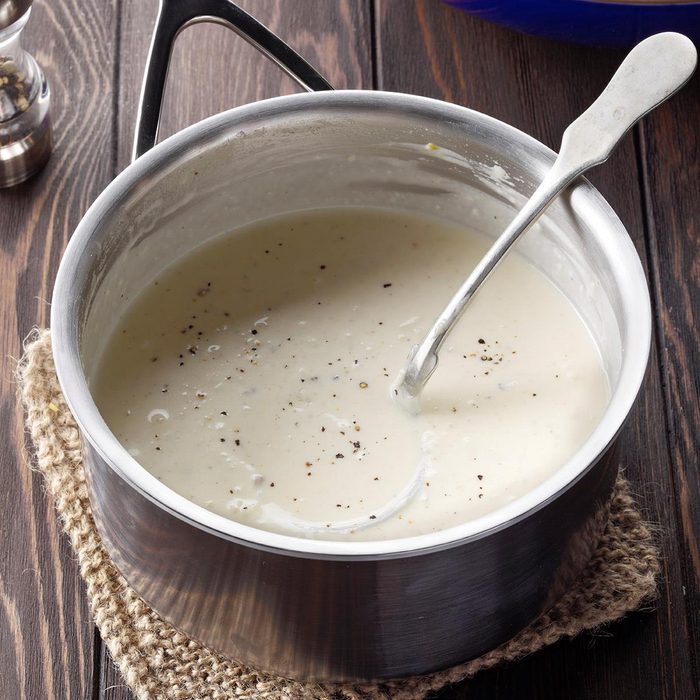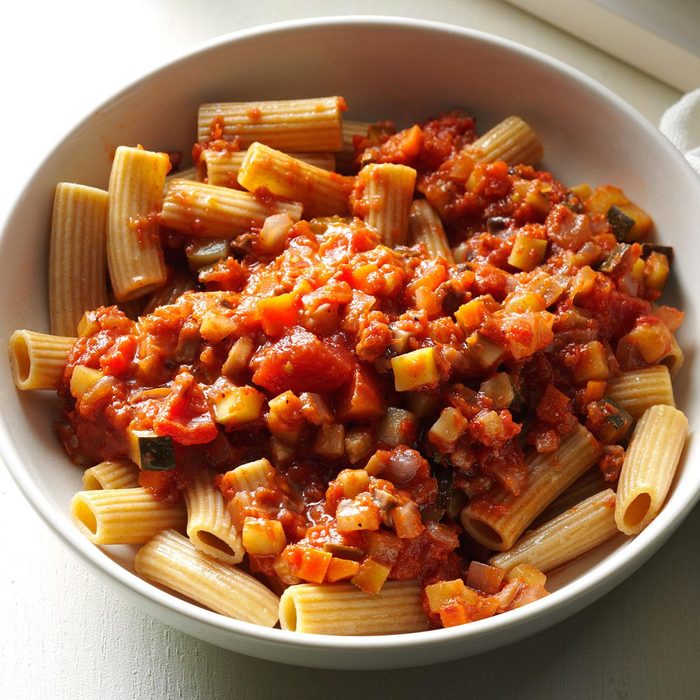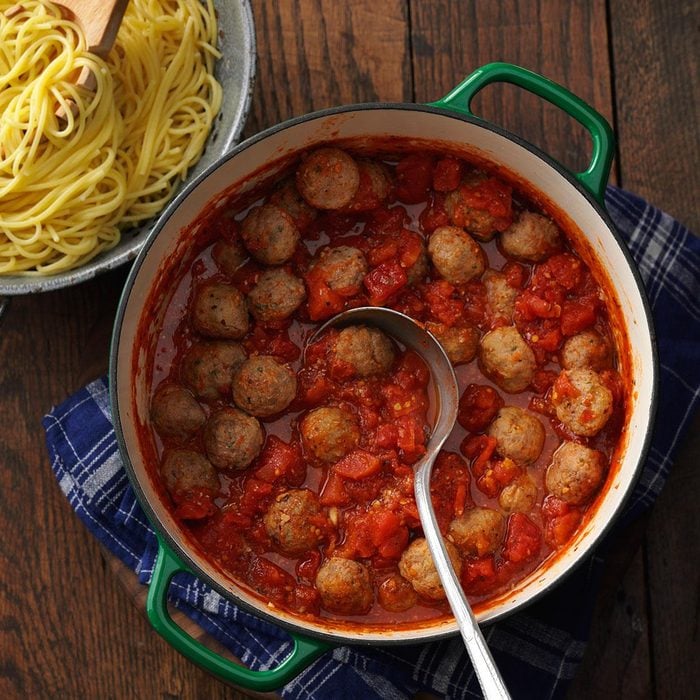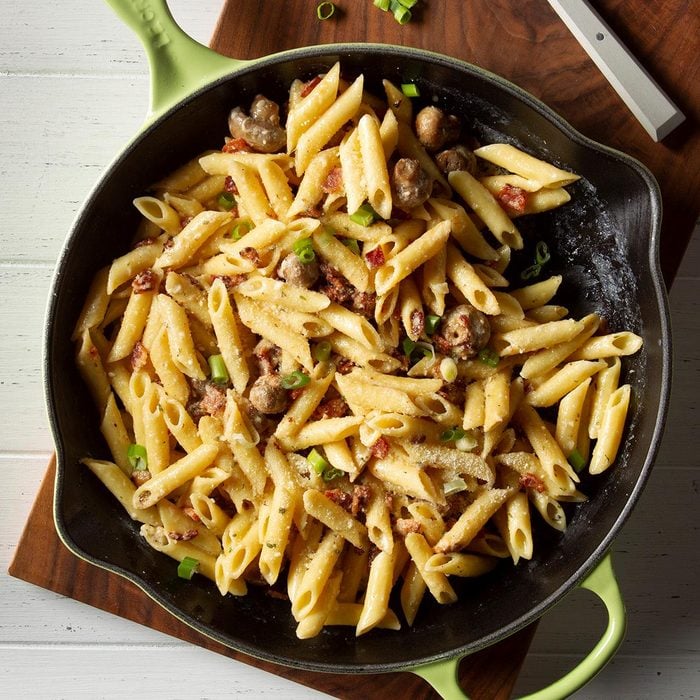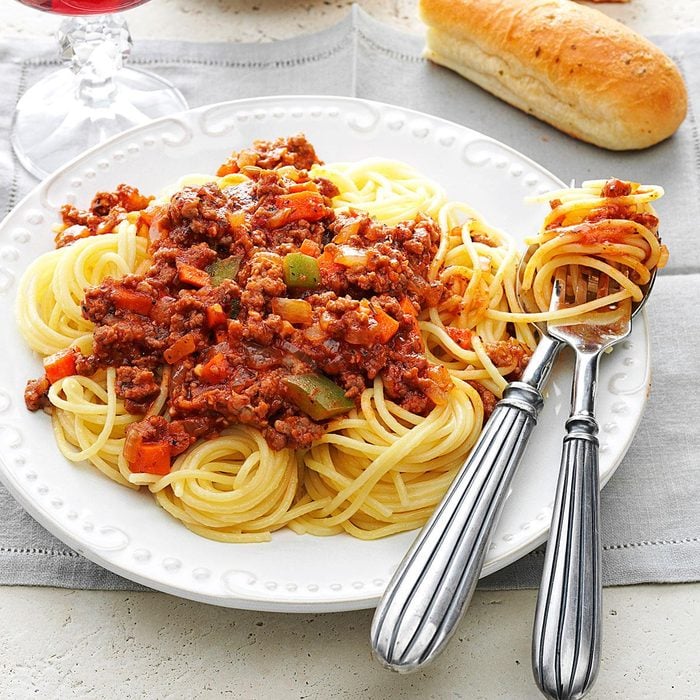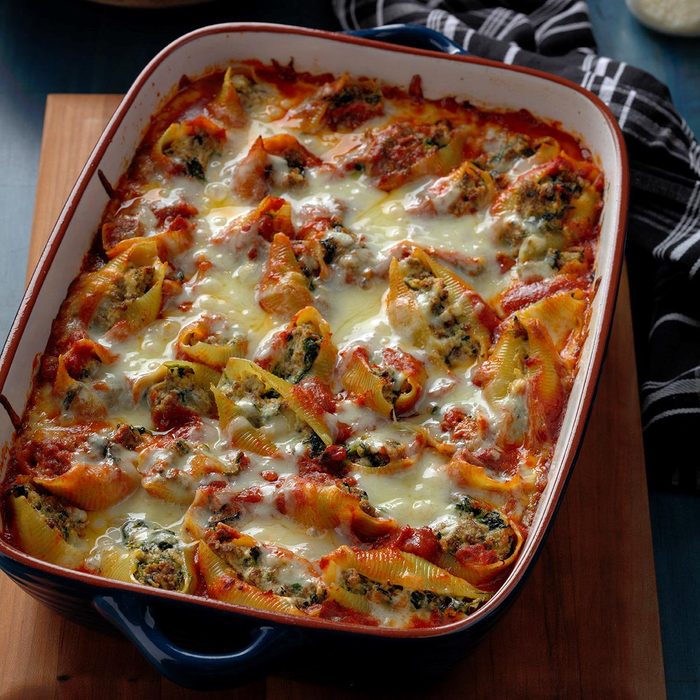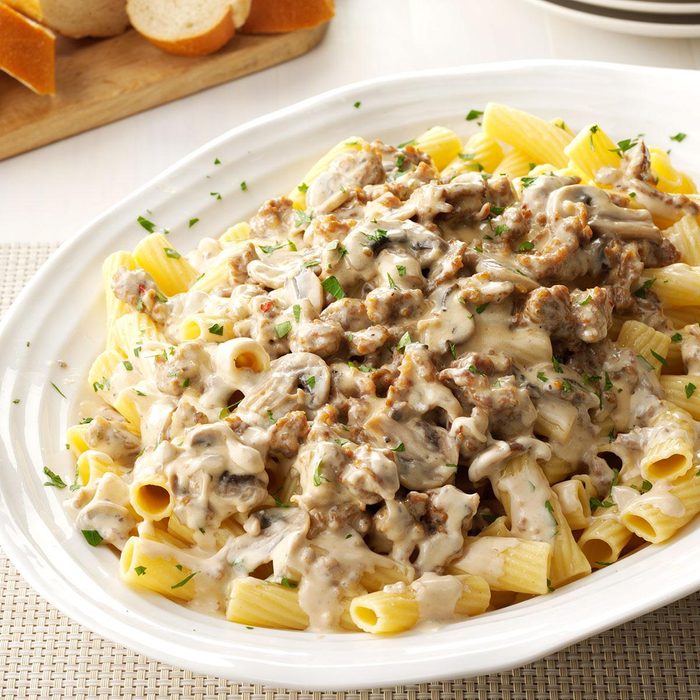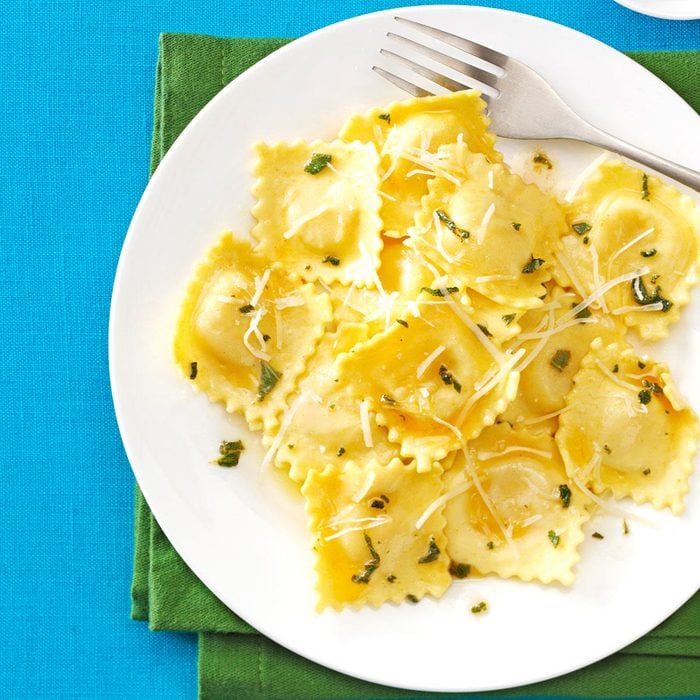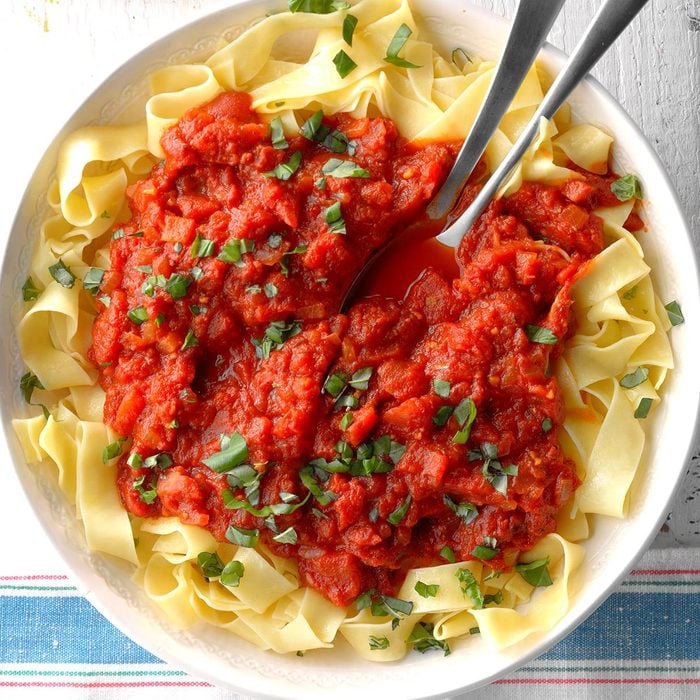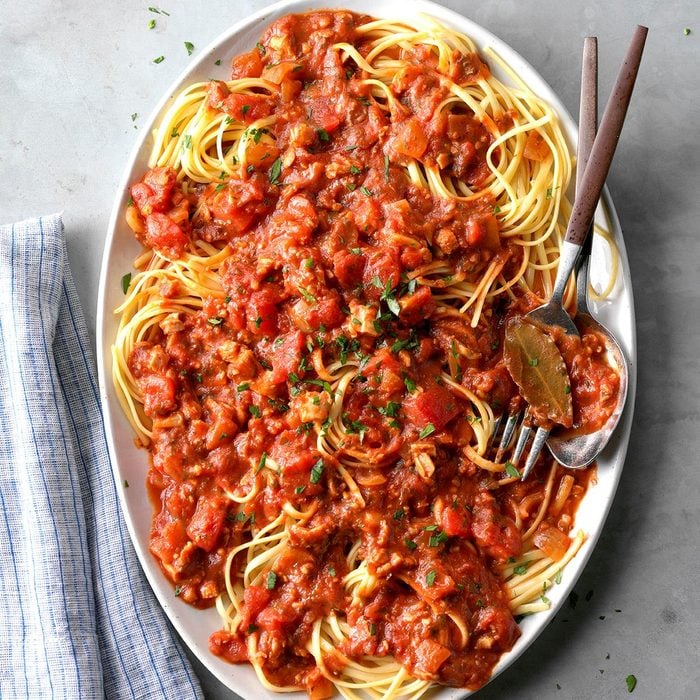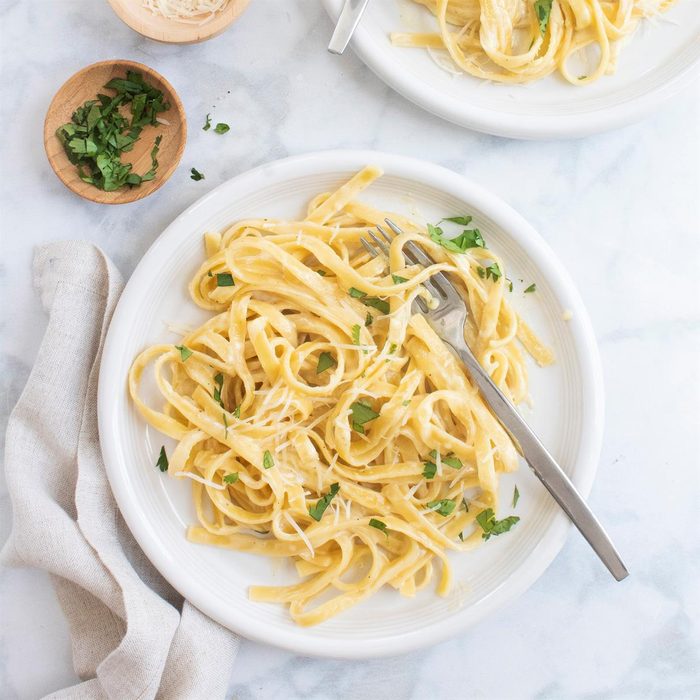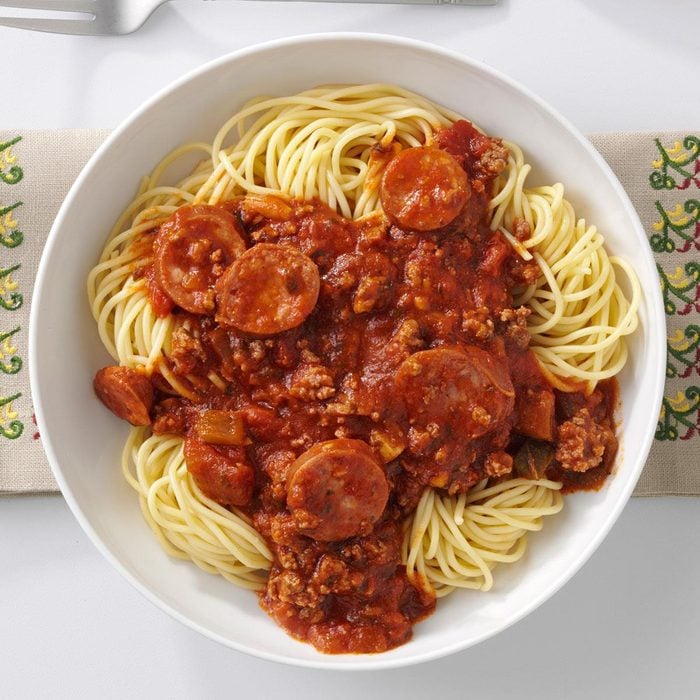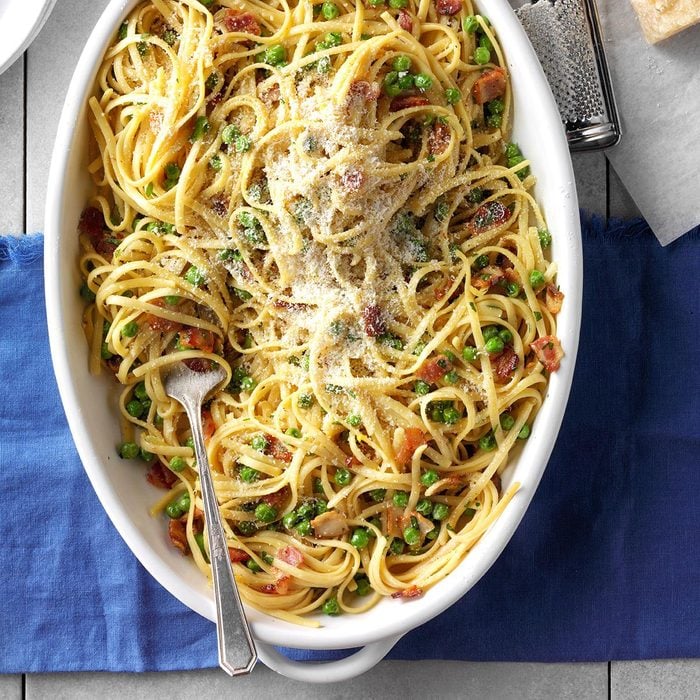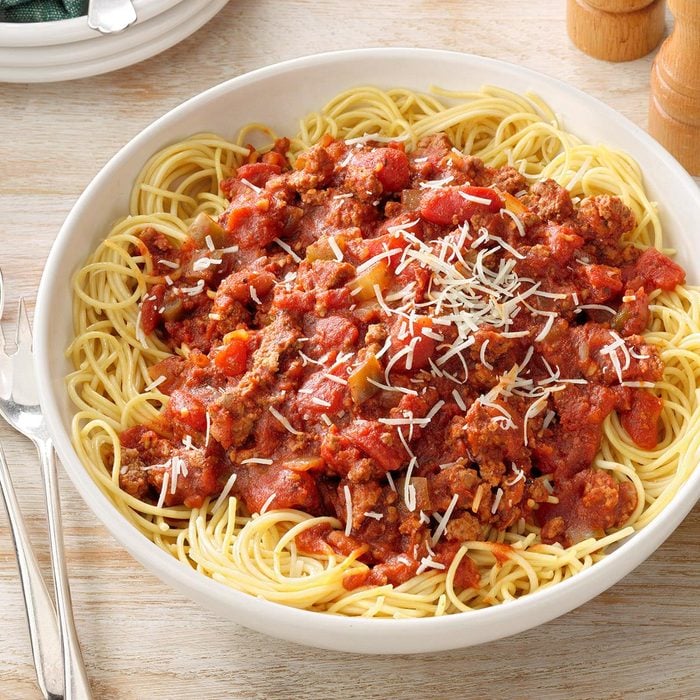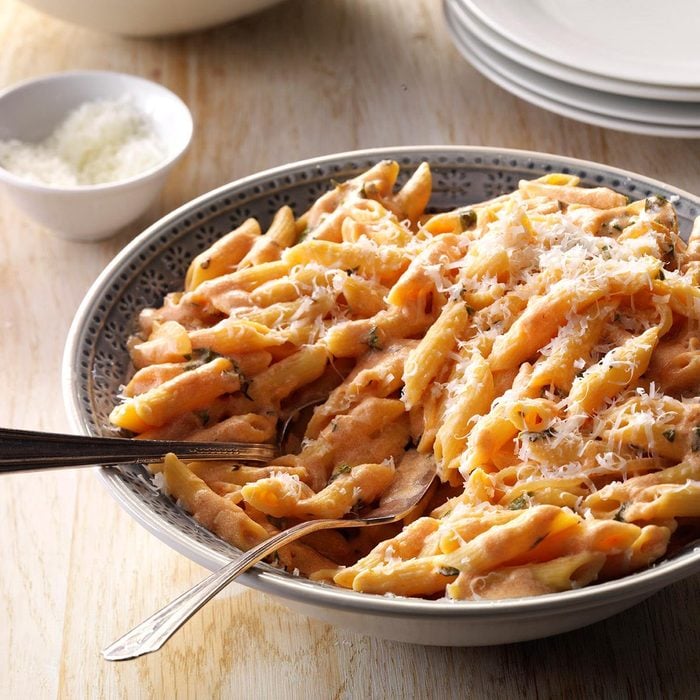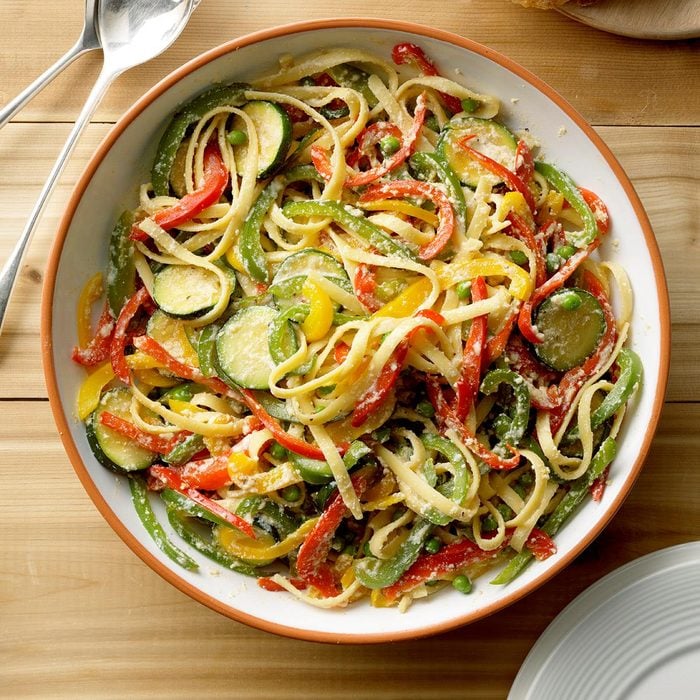 TMB Studio
Penne alla Vodka
TMB Studio
Penne alla Vodka
This easy and impressive pasta is always on the menu when my husband and I have new friends over for dinner. Years later, they've asked me to make this Penne alla Vodka recipe again. —Cara Langer, Overland Park, Kansas
Get Recipe
Looking for something a little lighter? Try these
healthy pasta sauce recipes.
Simple Pasta SauceThis is a simple pasta sauce that you can use for more than just spaghetti. Puree this recipe for pizza sauce or a great dipping sauce. I also like to make a variation for bruschetta by omitting the olive oil, using fire-roasted diced tomatoes and simply combining the uncooked ingredients. Refrigerate for at least two hours before serving on toasts. —Deborah Markwood, Chester, Virginia
Want to try something new tonight? Mix up one of these
vegan pasta sauce recipes.
Homemade Fettuccine AlfredoThis easy Alfredo sauce is creamy, comforting and coats fettuccine noodles in fine fashion. This recipe is wonderful as is, but sometimes I like to add sliced fresh mushrooms and black olives that have been sautéed in butter and garlic. —Jo Gray, Park City, Montana
Yum! For more sauce recipes, tips and tricks, check out our
ultimate guide to pasta sauce.
Classic PestoThis versatile pesto boasts a perfect basil flavor. Pair it with pasta (or one of these creative
recipes using pesto and you've got a delicious dinner. —Iola Egle, Bella Vista, Arkansas. Try this delicious
pesto pasta recipe.
Beef Bolognese with LinguineAfter much research, tasting and tweaking, I finally came up with this beef bolognese recipe, based on a dish from an Italian restaurant where I worked. It’s perfect for feeding a house full of guests. —Christine Wendland, Browns Mills, New Jersey
Here are the other famous
types of pasta sauces that you need to try now.
MarinaraMy mother, who was Italian American, called marinara sauce "gravy." She made this marinara sauce recipe in big batches several times a month, so it was a staple on our dinner table. A mouthwatering aroma filled the house each time she cooked it. —James Grimes, Frenchtown, New Jersey
Homemade Canned Spaghetti SauceDIY canning spaghetti sauce recipes are a tomato grower's dream come true! Use up your garden bounty and enjoy it later in the year. —Tonya Branham, Mt. Olive, Alabama
Tortellini with Tomato-Cream SauceThis tortellini with tomato cream sauce is mouthwatering. Put spinach, tomatoes and other pantry staples to use in this warm and satisfying dish. —Barbra Stanger, West Jordan, Utah
Stamp-of-Approval Spaghetti SauceMy father is very opinionated, especially about food. This recipe received his almost unreachable stamp of approval. I have yet to hear a disagreement from anyone who has tried it! —Melissa Taylor, Higley, Arizona
Homemade Alfredo SauceWhen I found out I had celiac disease and could no longer have fettuccine Alfredo, I was determined to figure out a way to re-create it. This has now become one of my most-requested dishes. I use gluten-free multigrain pasta, but you can use any style of pasta. —Jackie Charlesworth Stiff, Frederick, Colorado
Mushroom Bolognese with Whole Wheat PastaA traditional Bolognese sauce is meat-based with everything from pork to pancetta. Skipping the meat, I loaded this pasta dish with baby portobellos and veggies. —Amber Massey, Argyle, Texas
Spaghetti Meatball SupperIt was such a joy to come home and find my mom making spaghetti and meatballs for dinner. This recipe has always been dear to my heart. —Debbie Heggie, Laramie, Wyoming
Mushroom Pasta CarbonaraI absolutely love this creamy and cheesy mushroom carbonara. I serve it with a side salad and rolls to make a complete meal. —Cindi Bauer, Marshfield, Wisconsin
Meat Sauce for SpaghettiHere's a thick, hearty meat sauce for spaghetti for a filling feast. When I'm in a hurry, I make this slow-cooker recipe in an electric frying pan instead. —Mary Tallman, Arbor Vitae, Wisconsin
Stuffed Shells with Arrabbiata SauceThis Italian classic takes on a distinctive Latin American flourish with the addition of chorizo. The sausage adds an extra kick and awesome flavor to a dish that's already a favorite. —Crystal McDuffy, Fairfax, Virginia.
Seafood AlfredoMy guests usually can't believe I prepared this meal myself. The rich, creamy main dish features plenty of seafood flavors with a hint of garlic and lemon. Frozen peas and a jar of Alfredo sauce make it a simple supper that will be requested time and again. —Melissa Mosness, Loveland, Colorado
Creamy Sausage-Mushroom RigatoniIn Rome, we dined near the Pantheon. The amazing restaurant is now history, but its memory lives on in this tasty pasta with mushrooms and sausage. —Barbara Roozrokh, Brookfield, Wisconsin
Sage & Browned Butter RavioliAfter enjoying a similar dish in Italy, we came home and planted sage in our garden to be sure we could recreate the brown butter sage sauce. This quick and easy dinner always brings back fond memories of our trip. —Rhonda Hamilton, Portsmouth, Ohio
Homemade Meatless Spaghetti SauceWhen my tomatoes ripen, the first things I make are BLTs and this homemade spaghetti sauce. —Sondra Bergy, Lowell, Michigan
Red Clam SauceThis recipe tastes like an Italian restaurant specialty and cooks while you take care of other things. What a marvelous way to jazz up pasta sauce! —JoAnn Brown, Latrobe, Pennsylvania
Quick Fettuccine AlfredoThis simple fettuccine Alfredo recipe combines heavy whipping cream Parmesan and Romano cheese or a creamy, cheesy sauce that'll come together in minutes. —Jo Gray, Park City, Montana
For another easy option, learn
how to make simple pasta sauce.
Pizza-Flavored Pasta SauceI’ve been cooking since I was 6 years old and I’m always watching for recipes my friends and family will love. So when I tasted an unforgettable spaghetti sauce at a local restaurant, I just had to make my own version. —Angelina Falzarano, Midlothian, Texas
Light Linguine CarbonaraWhen we have to rush off at night, I make this speedy pasta with veggies and bacon. Serve with breadsticks or garlic toast, and dinner's done. —Mary Jo Miller, Mansfield, Ohio
Super Spaghetti SauceAt my house, we never know how many we'll have for dinner. That's why this spaghetti sauce is one of my favorites - flavorful, filling and fast. Smoked kielbasa gives it depth, and salsa adds the kick. —Bella Anderson, Chester, South Carolina
Broccoli Shrimp AlfredoAfter tasting fettuccine Alfredo at a restaurant, I came up with this shrimp Alfredo with broccoli version at home. Not only does my family love the creamy dish, but my husband prefers it to the one at the restaurant. —Rae Natoli, Kingston, New York
Authentic Pasta CarbonaraI learned on my culinary internship in Tuscany that real Italian cuisine is simpler than you think! This carbonara is quick, simple and delicious, just the way they like it in Italy. —Lauren Brien-Wooster, South Lake Tahoe, California
Meaty Spaghetti SauceMy homemade spaghetti sauce got rave reviews, but it was so time-consuming to make on the stovetop. My family loves this flavorful slow-cooker version. —Arlene Sommers, Redmond, Washington
Artichoke & Lemon PastaWhile sailing in the Mediterranean, we tasted a lemony artichoke pasta. I developed my own version of it that our guests love. Try it with shrimp and kalamata olives. —Peter Halferty, Corpus Christi, Texas
Blushing Penne PastaI reworked this recipe from an original that called for vodka and heavy whipping cream. My friends and family had a hard time believing a sauce this rich, flavorful and creamy could be light. —Margaret Wilson, Hemet, California
Pepper Ricotta PrimaveraGarlic, peppers and herbs top creamy ricotta cheese in this meatless skillet meal you can make in just 20 minutes. —Janet Boulger, Botwood, Newfoundland and Labrador
Looking for the
best pasta recipes? Look no further these incredible 5-star dishes.



